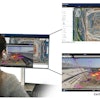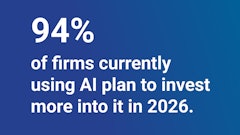Reversing the organizational chart is an approach to leadership and how a customer-centered culture can be infused throughout an entire organization in a quest to follow the true leader of every organization: the customer.
Early on in every company there is a founder who sets the direction through vision and energy. Momentum is created and perpetuated as the organization grows with the leader "calling the shots." As the organization responds to growing customer demands, additional teammates are hired. In fact, a great deal of effort goes into attracting, finding, selecting, training, and retaining the very best teammates possible. As each teammate is added, he or she is fit into a hierarchy that develops which becomes the Organizational Chart.
This chart is critical for everyone to understand their role, as well as the role of everyone else on the team; a "structure" is created. Left on its own course, the chart's functionality will grow along the same early path the founder created out of necessity. The entire team depends on the strategic and tactical wisdom found in the names at the "top" of the chart; the place where the important decisions are made. From those decisions, policy is documented for all those "below" these leaders to comply.
This top-down organizational structure is appropriate and useful when the circumstances simply do not allow for time and delegation, such as a combat zone where lives are on the line and very fast decisions and direction must happen. In a business environment we see this in drastic "turnaround" situations when sometimes day-by-day decisions and actions are taken over by the urgency of hour-by-hour action. Fortunately, we are rarely in these situations, yet organizations create and live in this kind of management structure and culture anyway.
For most companies, the result of this traditional top-down structure is that the pressure of always being called upon to solve the problems as well as come up with all the strategic innovations needed to grow the business all rests on the " top" few. Over time, this burden becomes very heavy and leadership fatigue can begin to set in as the growing company, forced to adapt at an ever increasing rate, begins to feel restricted by its own weight and size. The leadership team and the "line staff" often develop resentments toward each other as every teammate looks "up" with every problem and "phones home" for answers. The leadership team often asks " why can't they come up with answers on their own," and the rest of the team often develops the attitude of "it's not my job."
Leadership teams have an opportunity here to make an incredibly simple and fundamental decision: Reverse the chart.
The traditional organizational chart is a pyramid-shaped structure made of boxes and connecting lines, and the boxes are labeled with the function of the position and/or the name of the person occupying that role. The CEO, or President is at the top of the triangle. Then, through a matrix of these lines and boxes descending from the top there is a hierarchy of leaders and " direct reports" responsible for a more focused mission such as V.P. of Finance, operations, human resources, R&D, sales, marketing, administration, and so on. These people also have direct reports to assist in that focused role for the company, who oversee a string of other boxes descending into a mass of humanity, all having their path of leadership or authority indicated by solid and dotted lines. These are designed to define where they need to go to get answers or direction. This allows them to stay in concert with the culture and strategic direction that was set by someone or some group of well meaning, tired people at the top of the chart.
As mentioned above, this structure is brilliantly simple in providing a visual representation of a hierarchy of authority and responsibility that sometimes is critical and very effective when starting out. Having said this, there can be problems that are a direct result of staying with the culture this structure represents:
- All critical strategic direction, policy, tactics, and goals are designed and developed through long hours and a fair amount of argument by the people occupying the "top" of the chart, usually without sufficient help from those they are leading.
- Communication is "top down" and the message of what has been decided gets transferred through chains of command to the people occupying the boxes responsible to implement them. This is usually done with sufficient force and volume as to resemble the ocean tides or the flow of a river. Tough to swim against!
- Obtaining information on the effectiveness of a policy, protocol, or product is most times very difficult, so people stop trying. Leaders start hearing only the "hottest" or more vocal complaints and friction, and they begin to shut down through isolation from the "troops." They then depend on their subordinates to take the complaints and suggestions to collate into a consolidated set of findings, thus losing the emotional charge in the first place. The leaders appear not to care or not be in touch with the real issues.
- The great teammates hired evolve as well, developing two tragic traits: First, they learn their suggestions are being met with resistance and sometimes resentment that can progress to where they hear phrases like, just do your job." Second, they simply resign themselves to their function and disengage emotionally from the mission. They simply work each day complying with their minimal requirements. When asked to innovate or go above and beyond their required contribution we can many times hear, "it's not my job."
I recognize that this is a somewhat bleak picture and that through much heartfelt effort, companies thrive very well under this structure just fine.
It is not the structure that is inherently difficult but the placement of the pyramid on the page. What if we changed the whole thing around and put the pyramid on the page with the point on the bottom and the "line" people on the top? And while we're at it, let's add a box that is virtually always missing from the charts, the customer.
Reversing the Org Chart
Imagine the same company described at the beginning of this discussion. It is growing because it has a great product or service, designed on its market's behalf and is delivering it successfully. Leadership is doing a good job, and the teammates hold them in great respect and even affection. The founder or CEO is pleased!
But there is a storm brewing. The problems described above are starting to surface, leaders are finding themselves fatigued beyond what they expect from a long day, and customer feedback has been hard for them to get first hand as they are pulled into more and more functions and tasks that isolate them further and further from the direct contact with customers through layers of other teammates and responsibilities.
When you reverse the org chart, it's like saying, "Let's change how we lead. We'll have everybody who works for us solve their own problems, particularly those of the customers. They probably know better than us anyway because they talk to the customers every day. We'll support them to get what they need to take care of the customer."
When this is announced you could imagine all you-know-what breaking loose! Always remember, "Nobody wants change; they want relief." People react in their own way until a new picture comes into focus.
It's important to have a conversation with the team about this new style and explain its benefits to them. Let the team imagine a chart with the pyramid placed on the page with the point on the bottom. On the very top, outside the pyramid, and resting on the line are the customers. Next, is everyone that has direct contact with the customers like customer service, inside sales, outside sales, and so on. Then "down" the chart are their managers and on down to the primary divisional or department V.P.'s and eventually to the CEO.
Now imagine that the primary directive of anyone below the new top line of the chart is to get the company out of the way of the people dealing with the customer! Then imagine that all the problems and opportunities coming from the customer, the person on the top now, is in the same tide or flow headed down the chart to the primary leadership who have the directive to facilitate solutions rather than create every solution.
This is the key to the energetic and operational shift in reversing the chart. In this org chart, everyone in the company is in a true leadership role. They are tasked with the job of listening to the customer for what needs to be done in their function of delivering excellence to the customer and coming to their leadership with what they want to do to solve the problem. The "leadership" role now is to provide guidance, creative wisdom, and appropriate resources to support that solution. In other words, to get the company out of their way to take care of the customer.
The responsibility to know what to do, day to day, is now resting with the people best equipped and informed to know what to do. Here are a few issues to consider:
- "Leadership" may be reluctant to give up the autocratic style that was employed to get them to where they are today.
- Communication systems and protocols are designed to flow down the traditional path and need to be redesigned to accommodate a reverse flow and more interaction.
- Teammates that are used to leaving all the responsibility and creativity to their "bosses" may well be reluctant to take on their new leadership role. No more, "It's not my job," or pleasing customers belongs only to sales or customer service; everyone owns it.
- Customer feedback is way too limited and focused to give enough overall information of their experience of the true and highest value you provide to them, and the new leaders are not hearing the messages.
- Founders won't give up the "My way or the highway" position, surrounded by "sacred cows" that served the organization well in the past. These people will change their mind once they see their organization respond so positively and quickly to needed changes and see so many problems solved at the source, by the source.
How to do this
When you decide to reverse the org chart and put the people dealing with the customers " in charge," leadership will still carry the mantle of strategic and " big picture" thinking, but the day-to-day will be directed by those putting the initiatives on the ground for your customers.
Recognize your new leaders with great celebration, thus encouraging others to participate. At the same time, watch for those who pull back in fear or simple lack of initiative and be prepared to "coach, cut, or redeploy" to deal with the problem. This process is now a cultural change to be cultivated, grown, and enforced. Coming up with solutions attached to problems or opportunities is now a performance issue when evaluating employees for periodic review or hiring in the first place, so remember that there is always a balance between " can't and won't" in terms of getting onboard with reversing the Org Chart. Let's reward and show by example. Guide and train them, support and cultivate leadership in them with empathy, and then celebrate their success.
The primary benefit to this shift will be felt in several areas. The first area will be the relief of the primary leadership team as they are released to think and create strategically, rather than be bogged down in endless and sometimes trivial problem solving, from process issues to people.
The next and most powerful is the emergence of the entire company as problem solving leaders who are empowered to solve the customer problems on their own and enjoy the absolute thrill that this creates in their jobs and in the experiences your customers receive.
This is not a project with an end; it is a journey. Transition takes time, dedication, wisdom, leadership, and patience. The benefits are enormous for those that make it happen.
Go reverse the chart!
Phil Beakes is CEO of Peregrine InSight Group, a consulting and training firm dedicated to growing companies within their "ideal market." He will take his focus on the customer a step further in a presentation Feb. 19 at National Pavement Expo in Charlotte, NC. In The Our Guy Process: Using Your Favorite Customers to Drive Your Marketing and Growth, Beakes will outline his step-by-step system that will help contractors rely on their favorite and best clients to craft a better, more focused, and more successful marketing effort for new business. Reach Peregrin InSight at 1270 Bayside Circle, Oxnard, CA 93035. For a complete description of this and other NPE sessions visit www.nationalpavementexpo.com.



















